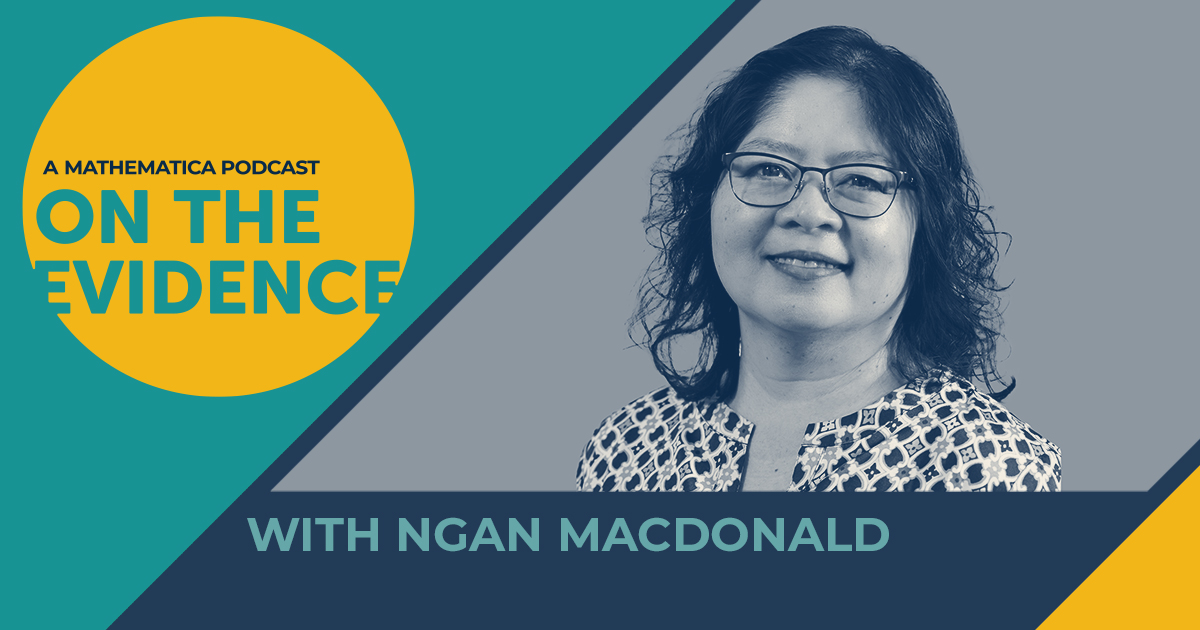A decade ago, Congress passed the Health Information Technology for Economic and Clinical Health (HITECH) Act to encourage the widespread adoption of electronic health records (EHRs). Now those records are here and nearly ubiquitous, but the transition hasn’t been smooth. On this week’s episode of On the Evidence, we talk with Genna Cohen and Llew Brown, who research and work with EHRs at Mathematica. We discuss challenges in adopting EHRs and what to do about them.
Click here to listen to the full interview. You can also read edited excerpts of the interview in the following transcript.
Prior to the adoption of the HITECH Act, what was the argument in favor of adopting EHRs?
Brown: Safer care, more efficient information sharing across providers, and more information in the hands of patients. Digitizing information also held the promise of enabling more advanced analytics and more researched-based, informed decision making.
Cohen: The idea was that electronic health records would make health information more easily available, whether that’s to providers or to patients, and that it would be easier to find and share information when you needed to.
What led federal policymakers to push for the widespread adoption of EHRs?
Brown: In 2000, the Institute of Medicine published a report called “To Err is Human: Building a Safer Health System.” It called attention to medical errors in health care and reported that more people died each year from medical errors in hospitals in the U.S. than from traffic accidents or breast cancer or AIDS. In 2001, the Institute of Medicine published another report, “Crossing the Quality Chasm: A New Health System for the 21st Century,” which pointed out issues that contribute to fragmented care and called for a redesign of the entire health system. One of the recommendations in that report was for a national commitment to eliminate handwritten clinical data by 2010.
Following those reports, Congress passed the HITECH Act, which was signed into law in 2009 as part of the American Recovery and Reinvestment Act, and provided significant monetary incentives for hospitals and ambulatory practice providers to install and adopt electronic health records.
Why has information sharing been harder than anticipated?
Brown: Part of the unrealized goal is due to a lack of appreciation of the complexity of this undertaking. Many other industries, such as aviation and banking, were far ahead of health care in terms of using automation and technology. Although we can all use an ATM pretty much anywhere, the set of data that’s involved in an ATM transaction is basic compared with the set of data involved in any health care encounter, where you’ve got a past medical history, the physical, prescriptions—there’s so much more information.
Cohen: I would add that there are certain pieces of health care information that providers record that they want to share with their patients and others that they would want to keep to themselves; patients might not like hearing how they’re described, even if providers find it useful for delivering care in the future. Likewise, there are pieces of health information that patients may share with their primary care providers that they wouldn’t want shared with their specialists or vice versa.
One form of complexity that has inhibited health information sharing is trying to figure out how to designate, “I want to share this part of my record with these people and a different part of my record with these other people.” It’s not all information flowing to everybody at the same time.
Genna, among the many issues that have cropped up as more hospitals and practices use EHRs is imperfect information sharing from one clinician to another and from one practice to another. Based on your research, how does the customization of these systems and variation in their use contribute to problems with them?
Cohen: Electronic health records were designed, built, and advertised as tools that would aid the way that you practice medicine now—not as something that would require any change or any adaptation in the way that you deliver care. As a result, I think that there was unknown variation in the way that people were using paper records that then became codified in electronic health records. Those variations can be subtle, but they can have profound consequences in people’s abilities to find health information.
I conducted a study where I looked at metadata from an electronic health record vendor and analyzed the documentation patterns of physicians across the country that were using the same vendor. Specifically, I studied variation in how primary care practices and different people in the same primary care practice use the same electronic health records.
I found that there were some tabs of the electronic health record where—across the country and no matter the practice setting—people were using that tab with similar frequency. For example, there was very little use of the Confidential Information tab. But there were other sections of the electronic health record, other tabs, where there was more variation. Some people seemed to use the Problem List tab in every patient visit. The Problem List is where you would document patient problems. But it turns out that there are a couple of different places in the electronic health record where it might be appropriate to document patient problems, which are also sometimes described as patient diagnoses.
So the electronic health record vendor had one tab for recording problems. It had a different tab for recording assessments and diagnoses, and it had yet another tab for recording notes during the review-of-systems portion of the exam, which is when the clinician will check on the different bodily organs—how’s your breathing, how’s your heart rate, and so on.
I found that there were five different tabs in the electronic health record that were variably used by different physicians and other clinicians in the same practice. Three of those five tabs include the places I already listed where you could record information about a patient’s chief complaint or about their conditions.
To follow on that national quantitative study, I collected qualitative data from 10 different practices in Michigan to try and understand if the variation that I was observing using the national data source was obvious to the people who were practicing medicine. Maybe they could explain to me what was going on and if it had any impact on the way that they delivered care.
Not very many people were able to identify or even articulate variation in documentation when I asked them about it, but when I talked to multiple people in a practice about how they would document certain types of information or how they would use those tabs in the electronic health record, they gave me different answers.
The underlying algorithms in the EHR assume that everyone will be using the EHR in the same way; in reality, there were several ways. This subtle, underlying problem might then interfere with the ability of the practice to run reports and flag all of their diabetic patients or all of their asthmatic patients because doctors and other people in the practice were using those parts of the electronic health record differently.
People would not know where the best place was to record information, and they had one of two strategies. Pick the place that worked for them, or document the information in multiple places because it’s a shared tool, and you don’t know who’s going to have to use it in the future. The latter strategy creates a burden for documentation in the moment. The combination of the two can lead to some confusion when you have some people in the practice putting information in one place, others putting it in multiple places.
I think people were sold electronic health records as tools to help them individually document and individually deliver care to patients when, in reality, they’re tools that should be thought of at the practice or group level with protocols and standards developed that work for most people so that there’s more certainty around what information you’re seeing and what information you’re not seeing.
Why should patients care whether EHRs are difficult for clinicians to use?
Brown: Safety is the first thing that comes to mind. I led a project related to health IT safety on behalf of the Office of the National Coordinator for Health Information Technology about a year ago, which included doing a literature search. One of the studies that we looked at was in the outpatient setting and related to clinical decision support.
Clinicians in that study were found to override nearly 90 percent of high severity alerts. What that means is, you’re a clinician, you’re at the computer, and you’re entering orders for a patient; there’s decision support functionality that’s intended to improve the safe use of this system and to make sure that the orders that you’re entering don’t conflict with an allergy that the patient has or won’t have a dangerous interaction with a medication they’re already on. Whether or not different hospitals or different providers are using the same electronic health record, bought from the same company, at a local level, you have the opportunity to set the sensitivity of the alerting.
The fact that clinicians were overriding nearly 90 percent of potentially dangerous alerts in this particular study suggests maybe that the alerts are too sensitive. The danger is that if providers are in the habit of ignoring the majority of these alerts because they believe the majority of them are noise, then the 10 percent that are true dangerous warnings might get overlooked as well.
If you had the funding for it, what would be your next area of research on this topic?
Cohen: I would want to pick an area of high variation in the EHR, such as the Problem List or Review of Systems section, dig into how people are using it, and try to build consensus around best practices. I think it would be important for that one area of the EHR, but it would also be an important case study of how to develop that consensus among the different stakeholders.
In my mind, the electronic health record is not an individual resource. It’s a practice or even a community resource. It would be incredibly valuable to find a way to balance the needs of the physicians and the nurses and the schedulers and the medical assistants so that the information is there when you need it and can be documented in a way that’s not intrusive or interfering with care that’s being delivered.
Brown: The issues related to patient safety are near and dear to my heart. After having been on the implementation side, as a human in the chair configuring the functionality in the EHR, I can easily see how a human makes a mistake. I would be enthusiastic about seeing more progress made where audit log data or other back-end system data could be used to go backward in time to understand patient safety issues. When the wrong patient is selected or the wrong medication makes its way all the way to the patient, can we understand or recreate the steps that a user took?
The tools aren’t there yet to use the data that’s already in the system to recreate these scenarios to understand how the system was used. Maybe it would uncover patterns that users are taking, or perhaps it would help get ahead of unsafe ways of using the system.
Want to hear more episodes of On the Evidence? Visit our podcast landing page or subscribe for future episodes on Apple Podcasts or SoundCloud.


